What is the perfect hyperpigmentation treatment? In short, the best and most effective method of treating hyperpigmentation is laser treatment. However, there are a series of other factors that need attention before looking into how to treat it.
Hyperpigmentation is a common and usually harmless condition in adult and aged individuals. However, it can also be a sign of deeper health problems that need further examination. Treating hyperpigmentation can mean treating the cause itself in some cases. Even so, skin coloring can persist past this stage.
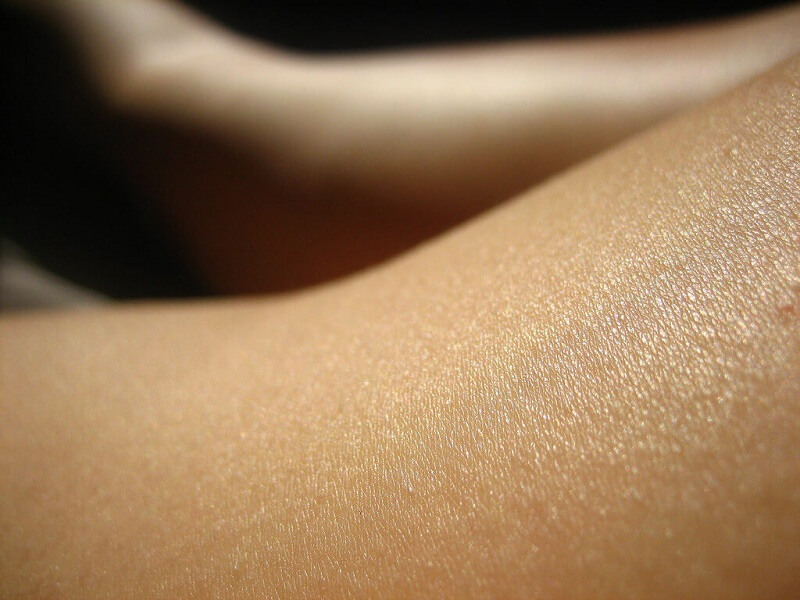
This article covers what hyperpigmentation is, what causes it, and how to remove hyperpigmentation on face or body.
What is Hyperpigmentation?
Hyperpigmentation refers to the effect of our skin cells producing too much pigment, thus creating darker patches and splotchy areas on skin. External or internal factors can cause them. Some forms can be harmless, but others can pose a threat to our health and life. You can consider freckles as a type of hyperpigmentation. You can check out our article about how to remove freckles if you are interested in that. In this article, we are going to focus on other types of hyperpigmentation.
Causes & Types of Hyperpigmentation
There are many factors that can cause darker formations on the skin in our own body and in the modern environment. All these lead to multiple types of hyperpigmentation. They can be a manifestation of some other afflictions that need further scrutiny.
Types of Hyperpigmentation
There are many types of hyperpigmentation. Every one of them can be a harmlessly excessive pigmentation or a sign of disease:
- Lentigo or Lentigines are medical terms for freckles. Genetics and environmental factors can lead to this type of hyper pigmentation.
- Solar Lentigines are commonly known as sun spots, age spots, or liver spots.
- Melasma or chloasma are widely known as pregnancy spots. Many cases happen in pregnant women. In addition, general hormonal changes, medication, soaps, toiletries, cosmetics, or sun exposure both in men and women can cause these spots.
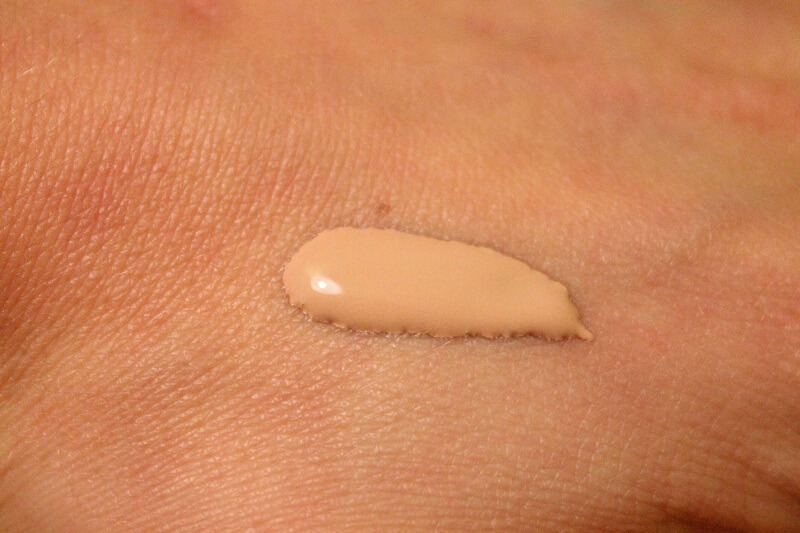
- Post-inflammatory hyperpigmentation results from pimples, cuts, burns, or minor injuries that have not healed properly.
- Insulin resistance can cause hyperpigmentation in intertriginous areas;
- Linea nigra is the Latin name for the dark vertical line that appears on the abdomen of pregnant women. 3 in 4 women start to notice this line in their third trimester.
Hyperpigmentation Causes
The most common causes for hyperpigmentation of the skin are:
- Sun exposure;
- Free radicals can be responsible for abnormal melanin production patterns.
- Skin injuries due to surgeries, acne, picking at the skin, or other lesions.
- Hormonal changes, which lower the production of folic acid. Some pregnant women can develop the Aromatase deficiency. This affects the sexual development of the fetus, delays his or her puberty, and hyperpigmentation in the mother.
- Medication like some antibiotics, anti-seizure drugs, birth control, or other hormone pills and injections;
- Some diseases and conditions can cause hyperpigmentation:
- Addison’s or other diseases that cause adrenal insufficiency. These are known to increase melanin synthesis.
- Cushing’s or other diseases that stimulate the production of the adrenocorticotropic hormone.
- Peutz-Jeghers syndrome produces pigmented macules on skin, lips, and oral mucosa.
- Cancer of the skin, gastrointestinal tract, lungs, breast, ovaries, or uterus can engage skin cells to produce more pigment.
- Celiac disease;
- Cronkite-Canada syndrome;
- Porphyria;
- Haemochromatosis;
- Nelson’s syndrome;
- Grave’s disease.
- Exposure to chemicals like mercury, salicylic acid, bleomycin, or cisplatin.
- Smoking causes smoker’s melanosis, a brown to black pigmentation of a smoker’s oral tissue.

Common Questions About Hyperpigmentation
Many myths revolve around hyperpigmentation treatment methods or causes. Here are the most common questions and answers about hyperpigmentation that will clear everything up:
Is hyperpigmentation dangerous?
Hyperpigmentation by itself does not threat our health. In fact, it is harmless most of the time if aesthetics is not an issue. However, it can indicate the presence of a worrying disease like Addison’s, Cushing’s, or cancer.
Are dark-skinned individuals safe from hyperpigmentation?
No; Hyperpigmentation can affect individuals of any skin color.
Are hyperpigmentation treatment methods 100% effective?
No treatment is 100% effective. We are talking more about reducing than about completely removing hyperpigmentation. Cases where hyperpigmentation completely disappears from the affected area are not rare. However, physicians do not expect it in any patient.
How to get Rid of Hyperpigmentation
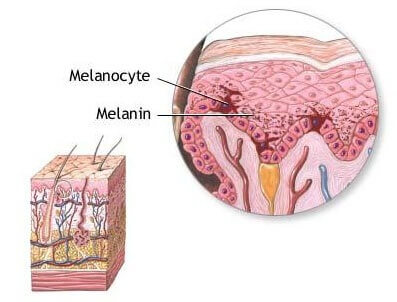 So how to treat hyperpigmentation if there’s nothing else to worry about? Well, researchers, pharmaceutical labs, and cosmetic companies have developed many hyperpigmentation removal methods over the years. The latest and most effective is laser treatment, but less invasive practices have also shown good results.
So how to treat hyperpigmentation if there’s nothing else to worry about? Well, researchers, pharmaceutical labs, and cosmetic companies have developed many hyperpigmentation removal methods over the years. The latest and most effective is laser treatment, but less invasive practices have also shown good results.
Before diving into the most common and successful ways to treat hyperpigmentation, we want to emphasize how important visiting a dermatologist is before taking any action. A consultation and preliminary investigation will tell you if the excessive pigmentation is due to a non-dangerous abnormality or if it is a sign of disease or cancer.
Free radicals in our environment can influence the production of melanin. Therefore, an antioxidants-rich diet is a must no matter the hyperpigmentation treatment of choice. This will improve the overall look of the skin and level pigment production.
Medical Hyperpigmentation Treatment Practices
The most popular and effective treatments for hyperpigmentation involve laser surgery. Nonetheless, other methods have shown promising results.
This is worth noting: these methods can partially or completely remove hyperpigmentation. However, it may reappear if a disease or a form of cancer has caused it. If this is your case, further investigation is necessary as soon as possible.
Laser Treatment
Treating hyperpigmentation with laser surgery can solve problems like under eye scarring or dark spots on face and body.
Doctors use argon and carbon dioxide lasers to expose the hyperpigmented skin area to intense light. Other modern techniques include laser resurfacing, q-switched ruby lasers, or other laser technologies.
A procedure usually lasts between 30 and 40 minutes, but can take longer for extensive hyperpigmented areas. A stinging sensation or discomfort comes with this treatment, but you cannot call it painful. Temporary redness of the treated skin is normal and can last up to 24 hours. Keeping the skin clean and free of cosmetic products is a requirement, and so is sun exposure. If patients cannot avoid sun exposure at least for the first day after treatment, applying sunscreen with at least 50 on the SPF scale is necessary.
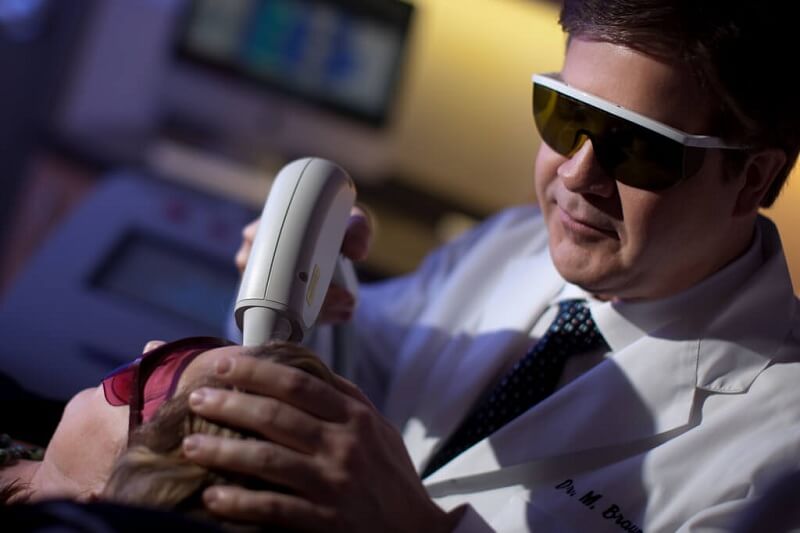
No matter the technique, experts consider laser surgery to be the best treatment for hyperpigmentation at the moment. However, it does come with a set of risks for patients:
- Damage to eyes if the laser is improperly positioned and hits the retina. A moment of contact can cause burns and result in permanent blindness.
- Blistering, burning, or redness of the skin right after treatment. Laser technologies that produce extreme positive temperatures can also cause heat damage to the skin tissue.
Creams, Lotions, Masks, and Other External Use Treatments
Creams, also known as cosmeceuticals, can also treat hyperpigmentation effectively. There are plenty of over the counter cosmeceuticals that are somewhat effective as a hyperpigmentation treatment. However, you can buy the most effective non-laser hyperpigmentation cure only with a prescription.
The most common ingredients in medically-attested external hyperpigmentation treatments, be they natural or lab-produced extracts, are:
- Hydroquinone: Prescription hydroquinone creams are the most common non-laser treatment for hyperpigmentation. The active ingredient slows melanin production and gradually evens out skin’s coloration. Over-the-counter products contain about half the active ingredient than prescription ones.
- Retinol, also known as tretinoin: Creams with retinol are called “retinoids”. Experts use it to diminish the effects of severe hyperpigmentation cases, among other afflictions like psoriasis or acne. 3-6 months of regular treatment is needed to see improvement. Dermatologists can also recommend one-week breaks since, unfortunately, the agent is known to irritate sensitive skin.
- Cortisone: Also used for severe cases and known to irritate sensitive skin. 3 to 6 months of treatment are expected to see improvement
- Kojic acid: this non-phenolic agent is commonly found in hydrophilic fungi and inhibits the production of free tryosinase. Also an antioxidant, this naturally occurring substance is highly recommended as a hyperpigmentation treatment. Patients who do not show improvement after hydroquinone treatment can benefit from it.
- Ascorbic acid (Vitamin C): A naturally-occurring antioxidant, Vitamin C inhibits melanogenesis and tyrosinase activity. A 5% ascorbic acid treatment has shown 62.5 % improvement in melasma. Moreover, Vitamin C treatments have no registered side effects and can be used with or instead of stronger treatments.
- Alpha-tocopherol (Vitamin E): The most common alpha-tocopherol in humans is a vitamin E derivate. You can find Vitamin E, an important lipophilic and antioxidant, in plasma, membranes, and tissues. Studies have shown these agents have photoprotective action and enlighten hyperpigmented skin. Vitamin E rarely provokes allergies irritations, therefore is widely used in cosmetic products.
- Niacinamide: Studies have shown this agent is responsible for an overall lightening of the skin and hyperpigmentation reduction. It is best used with high-SPF sunscreen.
- Arbutin: Naturally occurring in plants and fruits like bearberry, blueberry, or cranberry, arbutin is one of the most common treatments for hyperpigmentation.
- N-acetyl-4-S-cysteaminylphenol: A stable and less irritating ingredient for hyperpigmentation treatment creams, it shows results after 2 to 4 weeks.
- Mequinol, a hydroquinone derivate.
Over the counter hyperpigmentation treatment products include creams, lotions, or other skin products. They usually contain the same or similar active ingredients, but in lower quantities.
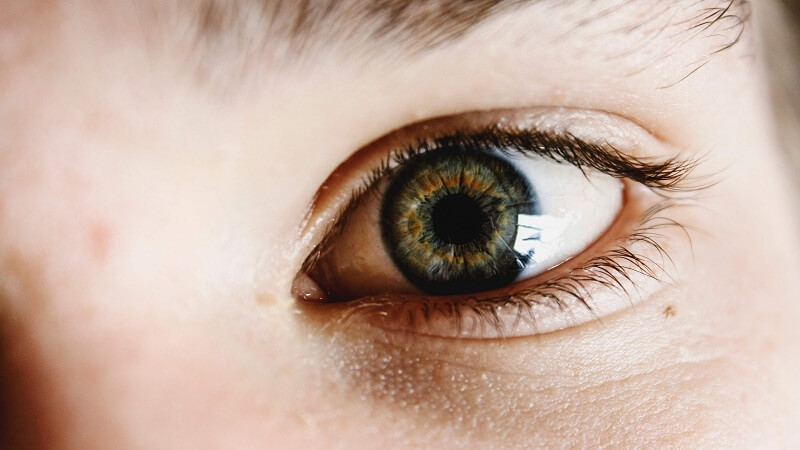
Natural Hyperpigmentation Treatment Ideas
You can easily treat hyperpigmentation with natural cures at home by creating hand-made cosmetics. Options include creating masks and creams, which require a certain texture, or bath soaks.
Masks and creams can comprise of heavy-textured substances like honey, powders, juices, or gels. Apart from avoiding heavier textures and powders, there are no limitations on the natural ingredients you can use for a bath soak or the combination. Here’s how to reduce hyperpigmentation with items that are easily accessible:
Ingredients
The best hyperpigmentation treatments from fresh ingredients that can be made at home contain one or more of the following ingredients:
- Lemon/Orange/Avocado juice, apple cider vinegar, or other mildly acidic juices;
- Raw Potato;
- Vitamins B12, C, and E;
- Turmeric;
- Aloe Vera;
- Sandalwood powder;
- Almonds;
- Honey;
- Grape seed extract;
- Orchid extract;
- Marine algae extract;
- Cinnamon, since it contains cinnamic acid;
- Flavonoids found in green tea and eucalyptus leaves or strawberries;
- Coffeeberry;
- Mulberry extract;
- Licorice extract;
- Carrot and coriander, since they contain umbelliferone.
Hyperpigmentation Prevention Tips
- Use plenty of broad-spectrum sunscreen. Reapply every 2 hours or after every swim to avoid skin damage from the sun.
- Exfoliate with a gentle scrub. If you want to make a homemade soft scrub, you can use blended almonds and milk to create a nourishing scrub. Or use lemon juice instead of milk. This will result in an astringent scrub that removes dead cells while fighting hyperpigmentation. It’s best to exfoliate 1 or 2 times per week if you have dry skin. Exfoliate once every 2 days if you have oily skin.
- Have an antioxidant-rich diet.
A series of surgical, non-surgical, and homemade procedures and methods can easily treat hyperpigmentation. However, the most important thing when noticing hyperpigmentation is visiting a dermatologist since it can be a sign of some serious heath issues.

